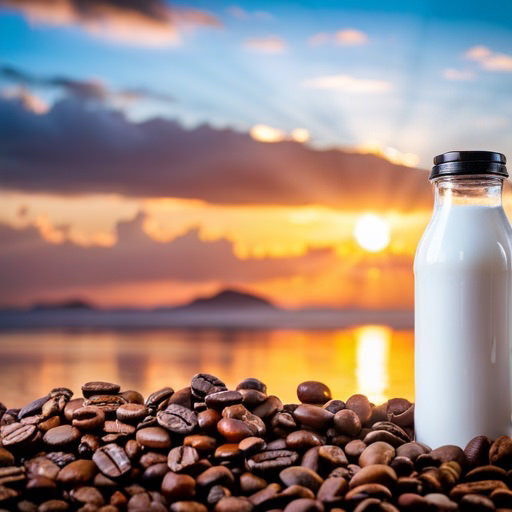Coffee is the most widely consumed beverage globally, with a multitude of milk options used to create various coffee drinks that cater to different tastes and preferences. Each type of milk has unique characteristics and taste profiles, contributing to the vast diversity of flavors in coffee. In this discussion, we will delve deeper into the five types of milk commonly used in coffee drinks, examining their unique properties and nutritional values.
Whole milk is the most commonly used milk in coffee drinks, offering a creamy texture and rich flavor that many people find satisfying. Whole milk typically contains around 3-4% fat content, which adds to its creaminess and sweetness. It is also an excellent source of calcium and Vitamin D, essential nutrients for maintaining strong bones and overall health.
Skim milk, or fat-free milk, has a significantly lower fat content than whole milk, usually around 0.5%. This results in a thinner and lighter texture in coffee, which some people may find less satisfying. However, for those conscious of their calorie intake or looking to reduce their fat consumption, skim milk can be a healthier choice. Additionally, it still provides essential nutrients such as calcium and vitamins.
Almond milk is a popular dairy-free alternative for those seeking a plant-based option or those with lactose intolerance. Made from ground almonds and water, it has a nutty and creamy taste, although it may be less creamy than dairy milk. Almond milk generally contains fewer calories than dairy milk, and it’s also a good source of Vitamin E, which is essential for maintaining healthy skin.
Soy milk is another widely used dairy-free alternative, made from soybeans. It provides a nutty and mild taste in coffee that some people prefer over other non-dairy options. Soy milk is high in protein and low in fat, making it a popular choice among health-conscious consumers. It is also a good source of essential nutrients such as calcium, vitamins, and minerals.
Oat milk has gained popularity recently due to its mild, oat-like taste and creamy texture that resembles dairy milk. Made from oats and water, it is a suitable option for those who have nut allergies or prefer a nut-free alternative. Oat milk is also rich in fiber and contains beta-glucan, which can help lower cholesterol levels and promote heart health.
Lastly, coconut milk is a dairy alternative with a distinct, tropical flavor that can add an exotic twist to your coffee. Made from the grated flesh of mature coconuts, it contains lauric acid, a healthy saturated fat known for its antimicrobial properties and potential to boost the immune system.
In conclusion, there are many milk options available for coffee drinks, each with its own unique characteristics and nutritional benefits. By experimenting with different types of milk, you can find the perfect combination for your coffee, allowing you to enjoy the diverse flavors and textures each option provides while catering to your dietary preferences and nutritional needs.
Please note that if you purchase from clicking on the link, some will result in my getting a tiny bit of that sale to help keep this site going.



